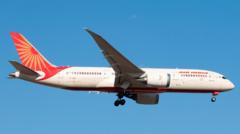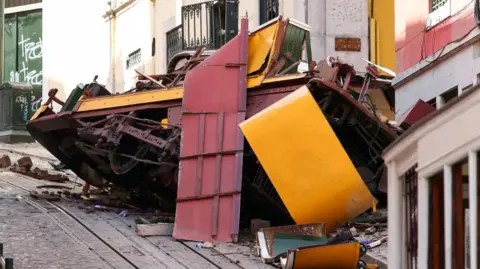The investigation into the Air India Flight 171 disaster that left the plane in ruins and resulted in widespread concern is unfolding at an intense pace. The Boeing 787 Dreamliner, which took off from Ahmedabad, crashed into a residential area just 30 seconds after departure, leaving investigators with a challenging task of discovering the causes behind this rare aviation incident.
Under the guidelines set by ICAO, investigators are required to submit a preliminary report within 30 days and a final report ideally within a year. The aircraft, piloted by Captain Sumeet Sabharwal and co-pilot Clive Kundar, was carrying 242 passengers and substantial fuel when it suddenly lost altitude, leading to an emergency distress call followed by a catastrophic crash engulfed in flames.
Experts are considering various potential causes for the crash. Former investigator Captain Kishore Chinta highlighted the rarity of a controlled flight crashing shortly after takeoff, suggesting numerous possibilities could have played a role. These include engine failure possibly due to bird strikes or fuel contamination, maintenance errors, or possible pilot actions that may have inadvertently cut engine fuel.
As investigators begin to analyze the wreckage, the focus will immediately turn to the aircraft's engines, which can provide crucial clues about their operational status at the moment of impact. The analysis of individual components and the data retrieved from the flight data and cockpit voice recorders—or "black boxes"—is of paramount importance in establishing a timeline of events leading to the disaster.
The Enhanced Airborne Flight Recorders are expected to provide valuable information, tracking performance metrics and cockpit sounds that could unravel what occurred in the seconds leading to the crash. Should it emerge that the engines were functioning, the spotlight would shift to examining other aircraft systems, including the flaps and their role in lift.
The investigation is not only focused on the technical aspects of the aircraft but also on the operational history of the plane and the training of its crew. All data, including maintenance logs and pilot training records, will be scrutinized, as well as the aircraft's record on previous flights.
Notably, the civil aviation ministry in India ensures transparency in its investigations; so far, recent inspections of Air India's Boeing 787 fleet have not indicated any significant safety issues. However, as experts note, the complexity of these investigations means that while immediate signs might reveal information, understanding the full scope of why the incident happened could take significantly more time.
As investigators work diligently to piece together this tragic event, the entire aviation industry remains vigilant over potential implications and the need for possible regulatory actions depending on the outcomes identified during this investigation.





















